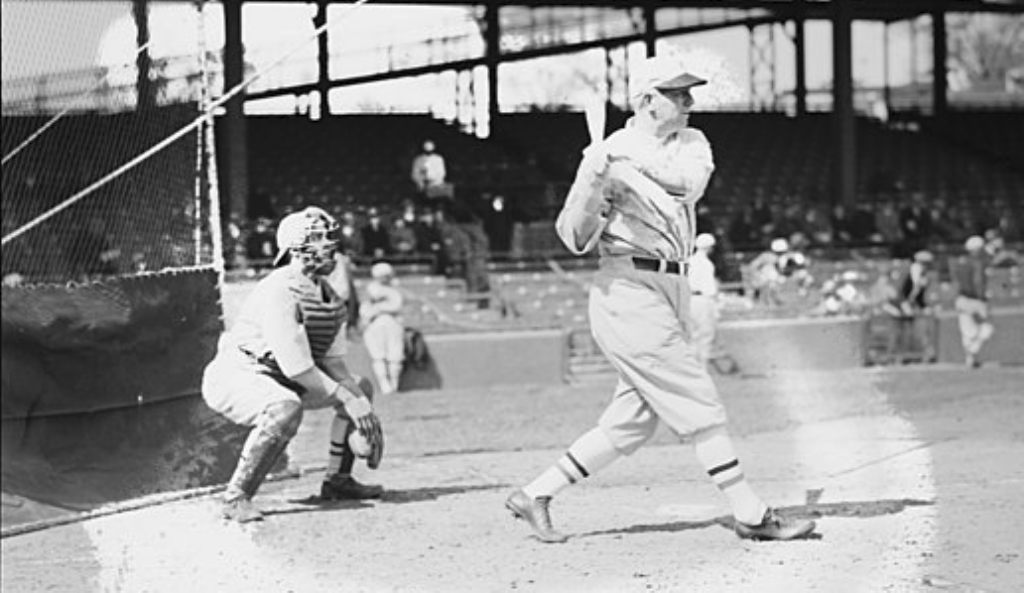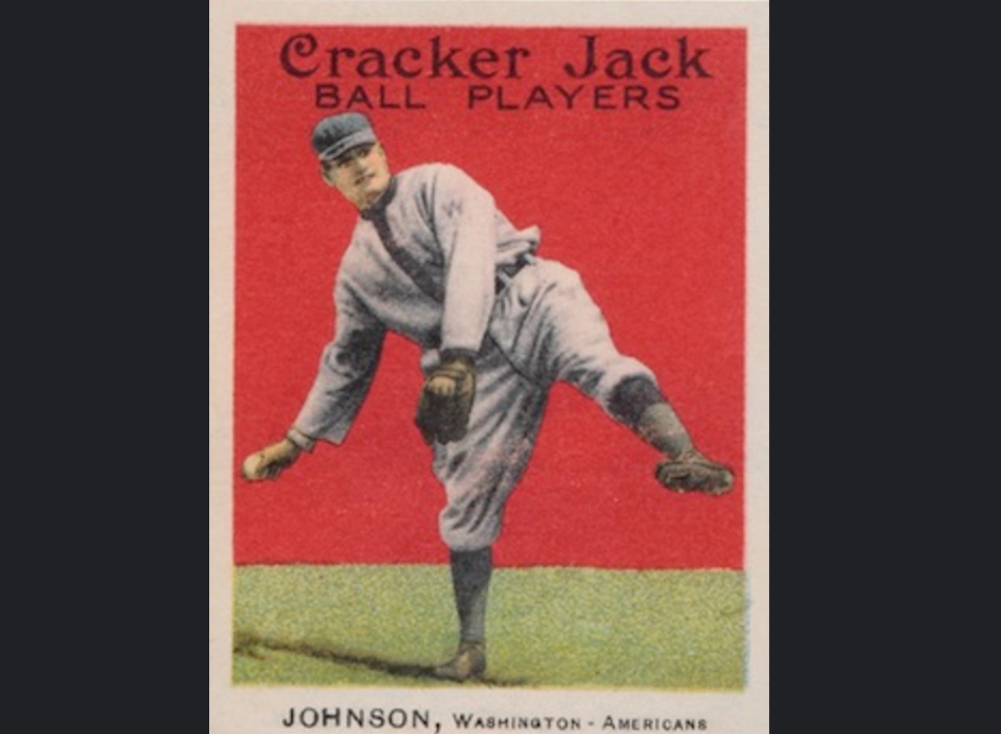Dave Bancroft And A Look at the Baseball Brilliance
-Beautiful Baseball Journey
Born in 1891, Bancroft's baseball journey was not without its share of challenges. His early years in the minor leagues were marked by struggles, but his unwavering talent and dedication shone through. He made his debut with the Philadelphia Phillies in 1914 and swiftly established himself as an elite defensive player. Unlike the conventional shortstops of the era, Bancroft showcased exceptional agility, range, and a knack for anticipating plays. He revolutionized the position by demonstrating the importance of a strong throwing arm and flawless footwork.
Beyond his defensive prowess, Bancroft was a player of strategic brilliance. He was credited with the innovative idea of 'playing the percentages,' a tactic where he positioned himself based on the batter's tendencies, thereby becoming a cerebral force on the field. He was also a switch-hitter, a rarity at the time, adding another weapon to his offensive arsenal.
-Brilliant and Long MLB Tenure
Bancroft's career spanned an impressive 16 seasons. He played for five different teams, including the legendary New York Giants, a team known for its strong defensive play and strategic approach to the game. Bancroft was a key cog in their World Series victories in 1921 and 1922, contributing with his exceptional defensive skills and consistent batting. While his batting average was solid but not spectacular, his consistency and ability to get on base were valuable assets. He also held the record for most fielding chances by a shortstop for decades, a testament to his defensive brilliance.
-Beyond His On-field Contributions
Bancroft played a significant role in the evolution of baseball. He was quick to embrace advancements like night games and early radio broadcasts, recognizing their potential to expand the sport's reach. Later in his career, he even managed women's professional baseball teams, further demonstrating his passion for the game in all its forms.
Dave Bancroft retired in 1930, leaving a legacy of innovation and excellence. His innovative defensive strategies, such as 'playing the percentages,' and his emphasis on agility and anticipation, have become standard in the game. He was inducted into the National Baseball Hall of Fame in 1971, a fitting tribute to a player who redefined shortstop, embraced change, and left an indelible mark on the game he loved.
Gene High Pockets Kelly
Hit 'Em Where They Ain't The Enduring Legacy of "Wee Willie" Keeler
Keeler's legacy rests upon his remarkable batting prowess. He compiled a career batting average of .341, placing him among the all-time greats. Notably, he achieved a phenomenal .400 batting average or above once in 13 consecutive seasons, with an average exceeding .300, showcasing his remarkable consistency. His 1897 season stands out, etching his name in the record books with a staggering .424 average, the highest single-season mark by a left-handed hitter, which remained unbroken for over four decades.
Beyond his batting average, Keeler mastered getting on base, achieving an on-base percentage above .400 for seven consecutive years. He understood the value of reaching base consistently, even through walks or singles, and his approach proved highly effective in generating runs for his team.
He wasn't just a one-dimensional player. Keeler displayed remarkable speed on the basepaths, stealing over 50 bases several times. Additionally, his fielding improved significantly after transitioning from third base to the outfield, ultimately becoming a reliable defender.
Keeler's impact transcended the statistics. He embodied a more strategic style of play, emphasizing precision and efficiency over brute force. His famous quote, "Keep your eye clear, and hit 'em where they ain't," captured his philosophy – prioritizing placing the ball strategically rather than aiming for home runs.
In a sport often dominated by power hitters, "Wee Willie," Keeler carved his path. Through remarkable batting consistency, a calculated approach, and an unwavering dedication to the game, he established himself as a legend, leaving an indelible mark on baseball history and inspiring future generations of players and fans.
The Baseball Journey of Monte Irvin
Born in 1919, Irvin's talent blossomed early. He excelled in four sports in high school and became a star in the Negro Leagues with the Newark Eagles. His well-rounded skillset included power-hitting, solid fielding at shortstop, and impressive base-stealing ability. He even played professionally in Mexico and Cuba, further enhancing his reputation as one of the best players of his generation.
However, the color barrier in baseball prevented Irvin from showcasing his talents on the biggest stage until 1949, when he joined the New York Giants at 30. Irvin quickly established himself as a force despite the delayed entry, hitting a .293 batting average with 24 home runs in his first entire season (1951). He finished third in the National League MVP voting, showcasing his ability to compete with the best even after years away from the major leagues.
Irvin's impact transcended statistics. He became a mentor and role model for younger players like Willie Mays, who joined the Giants in 1951. His calm demeanor and leadership helped pave the way for future generations of Black players in baseball.
While injuries and lost prime years undoubtedly impacted his ultimate statistics, Irvin's career speaks volumes about perseverance and overcoming adversity. He retired in 1956, leaving behind a legacy of excellence, both on and off the field. He was inducted into the Baseball Hall of Fame in 1973, a testament to his undeniable talent and the lasting impact he had on the sport.
Monte Irvin's story reminds us of the human cost of discrimination and the importance of recognizing the contributions of athletes who were denied the opportunity to reach their full potential on a level playing field. His talent, leadership, and resilience inspire generations of players and fans alike.
Johnny Mize and the Roar of Home Runs
From 1936 to 1953, Mize carved his name onto baseball's Mount Rushmore with a potent cocktail of effortless power and quiet confidence.
His bat was a conductor, orchestrating symphonies of soaring home runs. Three hundred fifty-nine dingers, each one a thunderous testament to his strength and swing mechanics honed in rural Georgia. He wasn't just a home run king; he was a complete hitter, batting .312 with a knack for clutch hits that made opposing pitchers whimper. Mize's 1947 season remains legendary, where he tied Ralph Kiner for the home run crown while striking out fewer than 50 times, a feat unmatched to this day.
But Mize wasn't just about statistics; he was a cornerstone. He anchored the St. Louis Cardinals during their golden age, his bat instrumental in securing World Series titles in 1942 and 1946. Later, he became a valuable bench player for the New York Yankees, finding the fountain of youth with three consecutive World Series rings from 1949 to 1951. His presence inspired, his clutch hits brought relief, and his booming home runs brought crowds to their feet.
However, Mize's story isn't solely one of triumph. World War II robbed him of three prime years, while injuries and age eventually tamed the Big Cat's roar. Yet, he retired without bitterness, transitioning to coaching and scouting, forever a part of the game he loved.
Casey Stengel
Stengel was traded to the Pittsburgh Pirates in 1918; however, he enlisted in the Navy that summer, for the remainder of World War I.
After returning to baseball, he continued his pay disputes, resulting in trades to the Philadelphia Phillies (in 1919) and to the New York Giants (in 1921). This legend of the game was on the World Series Champions New York Giants in 1921, 22. Stengel also was the manager of the New York Yankees was the won the World Series seven times. He is also famously the New York Mets' first manager.
Ross Youngs A Hall of Fame Flame Cut Short
Early Hustle and Minor League Struggles:
Youngs' baseball journey began in the minor leagues, where he displayed impressive hitting and fielding skills. However, his early batting average was underwhelming.
A Breakout with the Giants:
Youngs' fortunes turned around when he signed with the New York Giants in 1916. He quickly established himself as a valuable asset, known for his consistent hitting, speed on the basepaths, and solid defense. Youngs batted over .300 in eight consecutive seasons, showcasing his exceptional hitting ability.
World Series Hero and Postseason Prowess:
Youngs' talent shone brightest on the biggest stage. He was instrumental in helping the Giants reach the World Series four years in a row (1921-1924) and win it twice (1921, 1922). He even made history in the 1921 World Series by becoming the first player to achieve two hits in a single inning.
A Tragic End and Enduring Legacy:
Youngs' career was abruptly halted in 1926 when he was diagnosed with a fatal kidney disease. He passed away tragically young at the age of 30. Despite his shortened career, Youngs left a lasting impression on the game. With a lifetime batting average of .322, a knack for clutch hitting, and a well-rounded skillset, he earned a well-deserved place in the Baseball Hall of Fame in 1972.
Ross Youngs' legacy serves as a reminder of the potential that can be cut short and the enduring impact a player can have despite an abbreviated career.
Complete life and career bio on Ross Youngs. Born April 10, 1897 in Shiner, Texas, was Baseball Hall of Fame Right Fielder, Ross Youngs. Youngs was a heck of a ball player for the New York Giants from 1917 through 1926. Giants longtime manager, John McGraw gave Youngs the nickname "Pep" due to his hustle.
Leo Durocher Hall of Fame Shortstop
Tony Lazerri HOF Infielder
John Ward A Baseball Pioneer Beyond the Diamond
Born in 1860, Ward's athletic prowess emerged early. He debuted as a pitcher for the Providence Grays in 1878, leading the league in wins at the young age of 18. The following year, he etched his name in baseball lore by throwing the second-perfect game in history. However, a lingering arm injury forced him to transition to positions like shortstop and second base, showcasing his remarkable versatility.
Ward's offensive contributions were equally impressive. Over his 17-year career, he compiled a solid batting average of .275, amassing over 2,100 hits and 1,400 runs scored. More importantly, he captained the Brooklyn Ward's Wonders to a successful season in the Players' League, a short-lived competitor to the established National League.
Beyond the diamond, Ward's influence extended far and wide. He became a player-manager in 1880, demonstrating his leadership skills and paving the way for future players to take on similar roles. He also pursued a law degree, later using his legal expertise to fight for better player contracts and challenge the restrictive reserve clause that bound players to a single team. This paved the way for the formation of the first players' union, a testament to Ward's commitment to player welfare.
After retiring from baseball in 1894, Ward continued his impactful career. He represented players against the National League, served as president of the Boston Braves, and even ventured into the world of golf, where he achieved significant success.












